Why are Earth-orbiting satellites fundamentally unstable?

Without a boost, they’ll all come crashing down.
“I’m here for several reason, Mr. Pepin, first of all for aid. When something tragic happens in our skies, we do our utmost to extend sympathy. But sympathy without action,that’s an empty emotion. Mainly I’m here for the purposes of reentry.”
“I don’t understand.”
“Adjustment,” Harold said, “to earth. I’m here to make sure you didn’t leave your whole life in the sky.” –Adam Ross
It might seem like making a satellite orbit the Earth is the simplest, most natural thing in the world. After all, the Moon has been doing it without fail for over four billion years, and there’s no trickery or chicanery to its motion. Yet if we left the Earth-orbiting satellites we’ve put up in space alone for just a few years or decades, they’d re-enter the atmosphere, either burning up or crashing through to the ground and ocean, as so many satellites and spacecraft have famously (or infamously) done before.
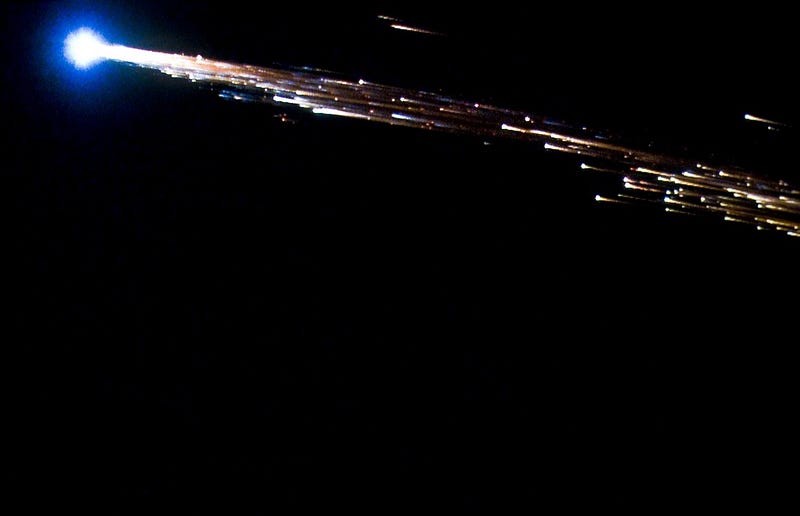
Moreover, if we look at the natural satellites of all the other planets, they’re all considerably farther away than the human-made satellites that orbit the Earth. The International Space Station (ISS), for example, orbits the Earth every 90 minutes, while our Moon takes nearly a month to go around us. Even Moons that have a reputation for being close to their planet — like Io around Jupiter, where the tidal forces heat and rip the world apart in volcanic catastrophes — are stable in their orbits.
Io is expected to remain in orbit around Jupiter for the remaining lifetime of our Solar System, while without any further measures taken, the ISS would de-orbit all on its own in the span of less than 20 years! The same fate is true for practically all the satellites presently in low-Earth orbit: by time the next century rolls around, practically all of our current satellites will have re-entered Earth’s atmosphere, either burning up completely or, for the larger ones (the ISS is 431 tonnes!), breaking up into large chunks which will strike the ground and ocean.
Why is this the case? Why wouldn’t these satellites simply follow Einstein’s, Newton’s and Kepler’s laws, and keep on making a stable orbit for all eternity? As it turns out, there are a combination of factors that cause this orbital decay.
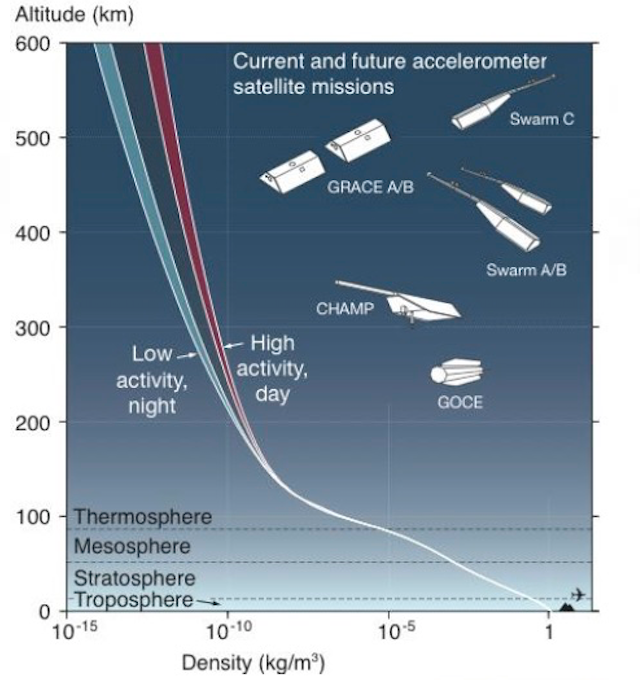
1.) Atmospheric drag. This is by far the biggest effect, and this is the reason that low-Earth orbits are so unstable. Other satellites — like geosynchronous satellites — will decay as well, but not on such short timescales. We normally define “space” as being anything more than 100 kilometers (62 miles) up: the Kármán Line. But any definition like this, of where space begins and a planet’s atmosphere ends, is truly artificial. In reality, atmospheric particles continue to extend arbitrarily far to high altitudes, just with the density becoming less and less the farther away you move. Eventually, the density drops so low — below a microgram per cubic centimeter, or a nanogram, or a picogram — that you say “we’re effectively in space.” But atoms persist from the atmosphere for thousands of kilometers (or miles), and when a satellite collides with those atoms, they lose momentum and slow down. This is why low-Earth orbit satellites are so unstable.
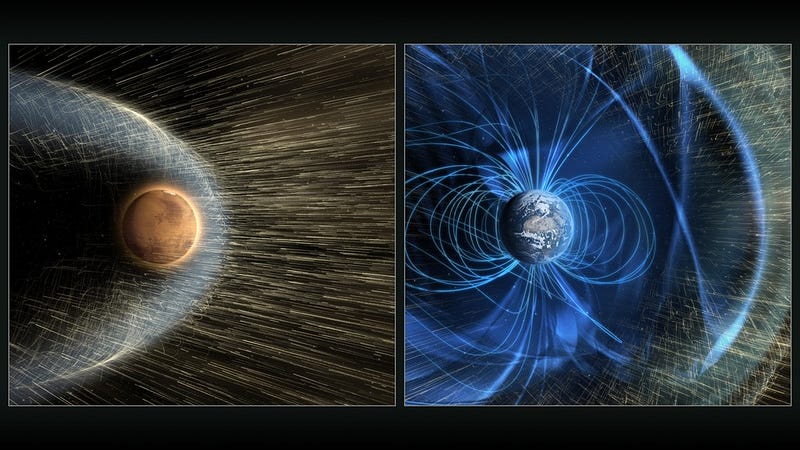
2.) Solar wind particles. The Sun constantly emits a stream of high-energy particles, mostly protons but also electrons and helium nuclei, that collide with anything it encounters. These collisions, too, alter the momentum of the satellites they collide with, and on average slow them down. Over long enough timescales, these cause the decay of orbits as well. While this isn’t the major cause of decay for low-Earth orbit satellites, it plays a crucial role in satellites farther out, bringing them inwards until the atmospheric drag takes over.
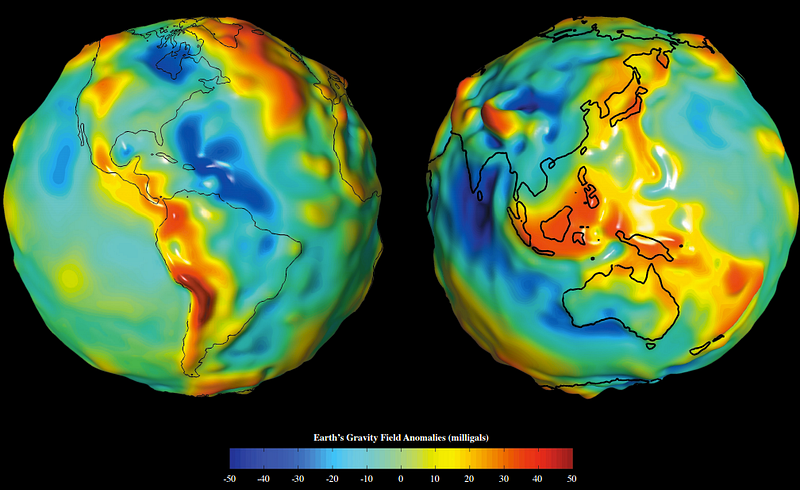
3.) The imperfect gravitational field of the Earth. If Earth didn’t have an atmosphere, like Mercury or the Moon, could our satellites stay in orbit forever? Nope, not even if you took the solar wind away. That’s because the Earth — like all planets — isn’t a point-like mass, but has a structure with an irregular gravitational field. That field, and the changes in it as a satellite orbits the planet, results in tidal forces on it. Extended objects feel a stronger gravitational force when they’re closer to the attracting object and a weaker one when they’re farther away, and those differences are what causes the tides on Earth. They also cause things like Io to rip apart around Jupiter, and satellites to lose momentum and de-orbit eventually. Although the timescales would be much longer than from atmospheric drag, the closer a satellite is to Earth, the greater these forces are.
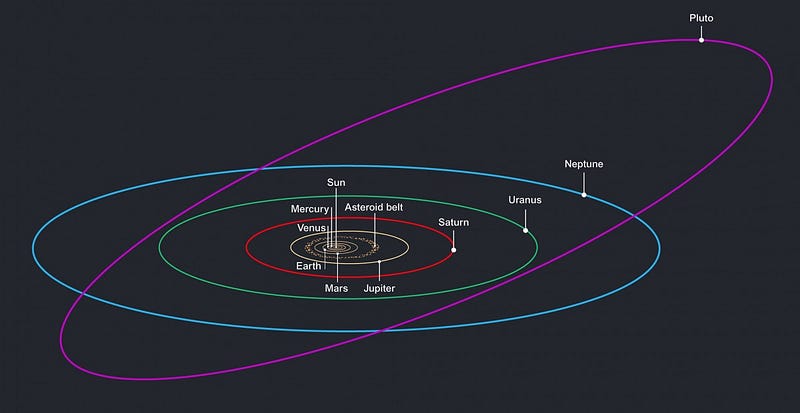
4.) The gravitational influence of the rest of the Solar System. It’s not like the Earth is just a totally isolated system, where the only gravitational force on a satellite comes from the Earth itself. No; the Moon, the Sun, and all the other planets, comets, asteroids and more contribute a perturbing gravitational force that causes orbits to not only shift, but to decay (on average) over time. Even if the Earth were a perfect point — say it shrunk down to a non-rotating black hole — with no atmosphere, and the satellites were all 100% shielded from the solar wind, these satellites would still eventually decay, spiraling into the central Earth. They’d survive in orbit for longer than the Sun will survive, but it’s still not a perfectly stable system; the satellites would still have their orbits collapse.
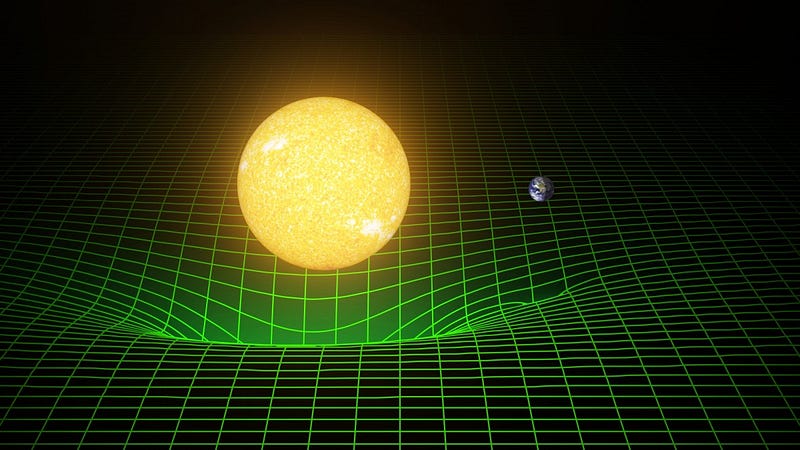
5.) Relativistic effects. Newton’s laws — and the traditional close, Keplerian orbits — simply don’t cut it in the end. The same force that causes Mercury’s orbit to precess by an extra 43″-per-century also causes orbits to decay ever-so-slowly, emitting gravitational waves when they do. Decay rates are incredibly slow for weak gravitational fields (like what we find in the Solar System) and for large distances: it will take ~10¹⁵⁰ years for the Earth to spiral into the Sun, and the low-Earth-orbit satellite decay rate is hundreds of thousands of times less than that. Nevertheless, this decaying force is present, and is an inevitable consequence of General Relativity that’s far more effective on satellites near a planet than ones farther away.
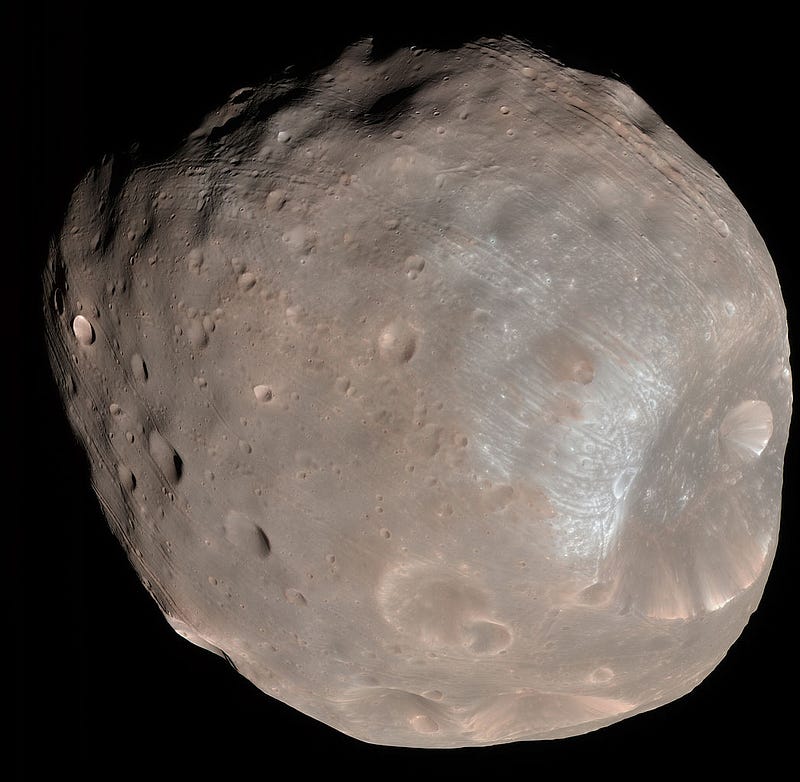
These decay features don’t simply affect our human-made satellites, but also some of the natural satellites we find in orbit around other worlds! Mars’ innermost moon, Phobos, for example, is fated to break up due to the tidal forces and spiral into the red planet’s atmosphere. Despite having just 1/140th the atmosphere of Earth, the Martian atmosphere is still large and diffuse, and in addition Mars has no shield from the solar wind (unlike Earth, which has a magnetic field), resulting in a timescale-of-doom for Phobos of tens of millions of years. That might seem like a long time, but in the lifespan of the Solar System, that’s just ~1% of how long we’ve been around!
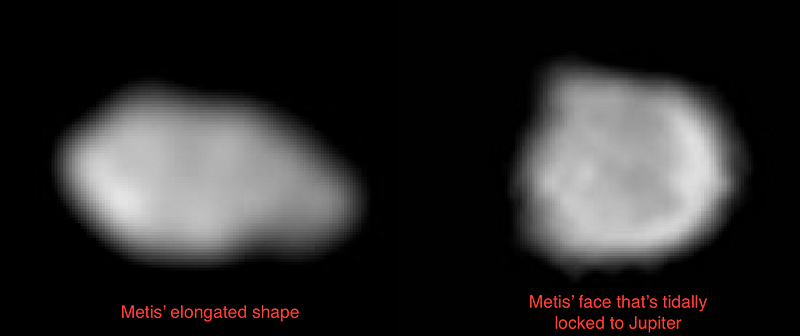
Jupiter’s closest moon isn’t Io, either: it’s Metis, whom mythology buffs will recognize as Zeus’ first wife. There are four small moons interior to Io, with Metis being the closest, just ~0.8 Jupiter radii away from the planet’s atmosphere itself. In the case of Jupiter, neither atmospheric nor solar wind forces are primarily responsible for the decay; with an orbital semimajor axis of just 128,000 km, Metis experiences tremendous tidal forces that will primarily be responsible for this moon’s inspiral into Jupiter.
As a spectacular example of how sometimes tidal forces truly dominate, we can point to Comet Shoemaker-Levy 9, and its collision with Jupiter back in 1994, after being completely torn apart by its tidal forces! This is an important factor for any large satellite orbiting close to a massive object, and is the eventual fate of all moons that spiral into their parent world.
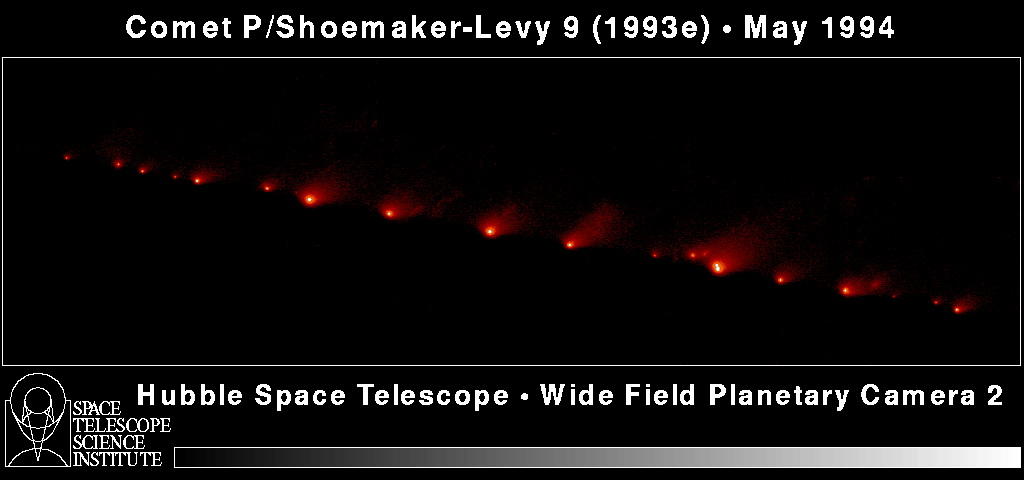
Each of these factors combine to make any satellite fundamentally unstable. Given enough time and the lack of other, stabilizing effects, absolutely everything will decay. It’s only that in low-Earth orbit, the atmospheric drag is such a large effect that the decays happen on timescales of less than a human lifespan! All the orbits are unstable after all, but some are more unstable than others.
This post first appeared at Forbes. Leave your comments on our forum, check out our first book: Beyond The Galaxy, and support our Patreon campaign!





